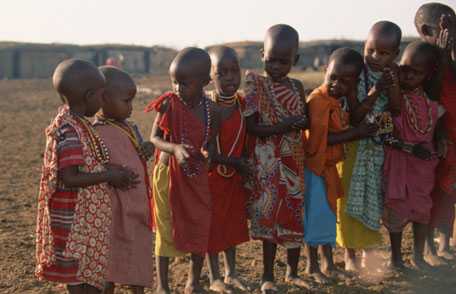Global Sexual Violence
 Prevent global sexual violence.
Prevent global sexual violence.
Did you know that rates of sexual violence against children are high in many low- and middle-income countries? Violence against children often hides in the shadows of a community due to the shame and/or fear associated with it. Data help us bring the problem out of the shadows and understand more about which prevention strategies can be sustained in these communities. CDC created the Violence Against Children Surveys (VACS) to collect data that measure the extent of physical, sexual, and emotional violence against children.
How VACS works
CDC and the United Nations Children's Fund (UNICEF) assist host countries in collecting data from households in their communities through the global public-private partnership called Together for Girls (TfG). TfG and its members then help the host countries use the information to plan responses and actions that make a difference.
Recent findings
Recent data focus on lifetime childhood sexual violence (before age 18 years) among females and males aged 18-24 in seven countries (Swaziland, Tanzania, Kenya, Zimbabwe, Malawi, Haiti, and Cambodia) between 2007 and 2013.
The data show that at least 1 in 4 females and 1 in 10 males have experienced some form of childhood sexual violence in the majority of countries studied. Swaziland and Zimbabwe reported the highest rates of all kinds of sexual violence among females (38% and 33%, respectively), while Cambodia reported the lowest rates for both females (4%) and males (6%). Among those who reported being a victim of childhood sexual violence, few received healthcare, legal/security aid, or counseling support.
Together for Girls Partnership Members
- Centers for Disease Control and Prevention (CDC)
- The United States Agency for International Development (USAID)
- The President's Emergency Plan for AIDS Relief (PEPFAR)
- The United Nations Children's Fund (UNICEF)
- The Joint United Nations Programme on HIV/AIDS (UNAIDS)
- The World Health Organization (WHO)
- The U.S. Department of State
- The United Nations Entity for Gender Equality and the Empowerment of Women (UN Women)
- The United Nations Population Fund (UNFPA)
- CDC Foundation
- Grupo ABC
- Becton, Dickinson and Company
The bigger picture
Preventing sexual violence is an important component of many disease prevention strategies. Being a victim of sexual violence puts a child at risk for HIV, sexually transmitted infections, heart disease, cancer, diabetes, tobacco use, alcoholism and drug addiction, depression, poor social relations, and low self-esteem, among others. CDC, PEPFAR and others are studying the link between sexual violence and HIV to better understand this relationship.
Next steps
Country-specific prevention and response programs are a necessary next step once the VACS data have been collected. CDC developed a resource called THRIVES [954 KB], which includes evidence-based programs and policies for health, education, mental health, social services, and justice systems that countries can use to prevent and respond to violence against children. CDC, PEPFAR, WHO, and UNICEF support and conduct research ofthe programs and policies described in THRIVES.
For the full report and the study details, please visit the Morbidity and Mortality Weekly Report (MMWR).
CDC's Division of Violence Prevention works to prevent violence and its adverse health consequences. For more information about the Violence Against Children Survey, please visit the VACS website.
- Page last reviewed: June 5, 2015
- Page last updated: June 5, 2015
- Content source:
- National Center for Injury Prevention and Control, Division of Violence Prevention
- Page maintained by: Office of the Associate Director for Communication, Digital Media Branch, Division of Public Affairs




 ShareCompartir
ShareCompartir